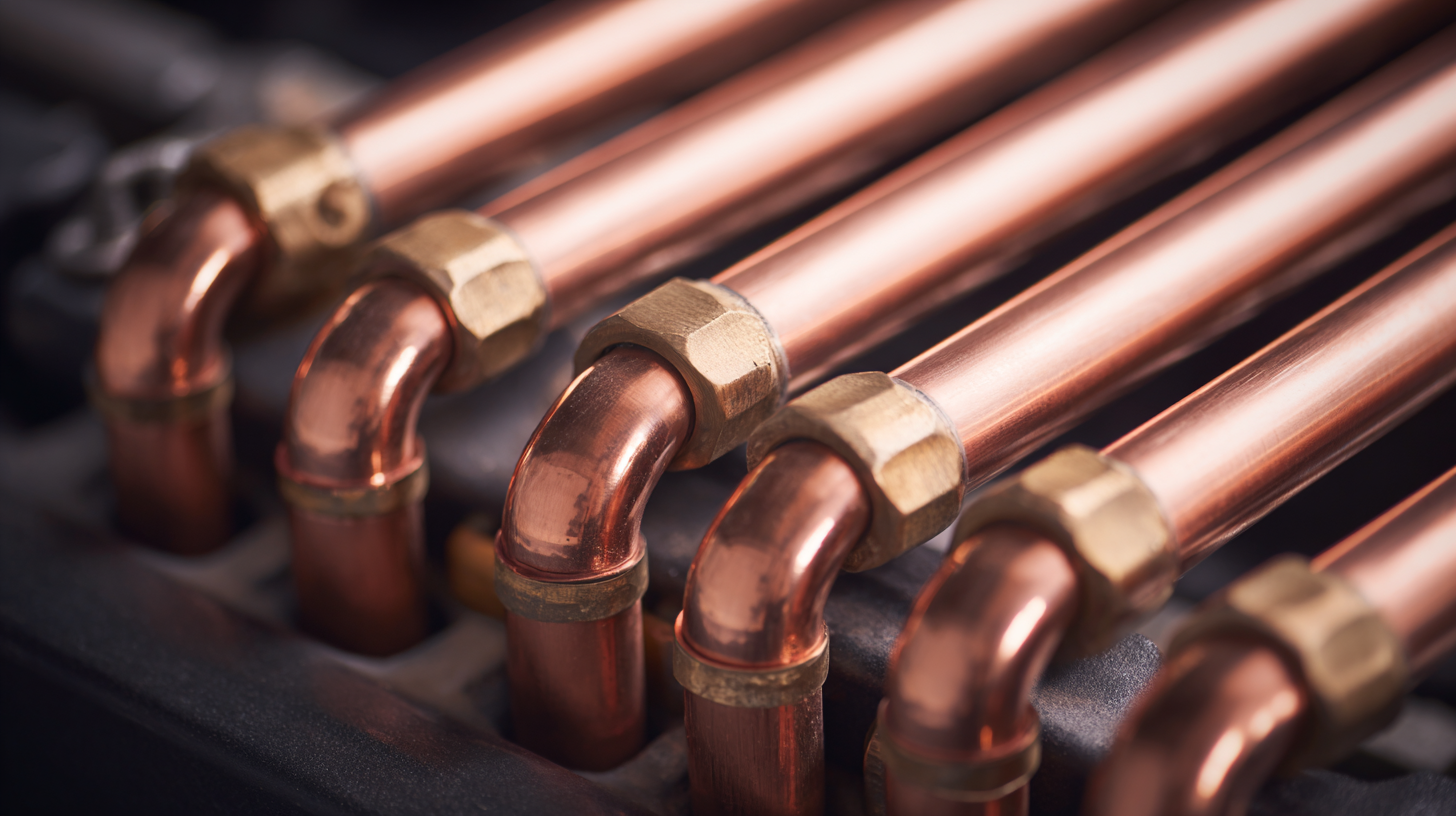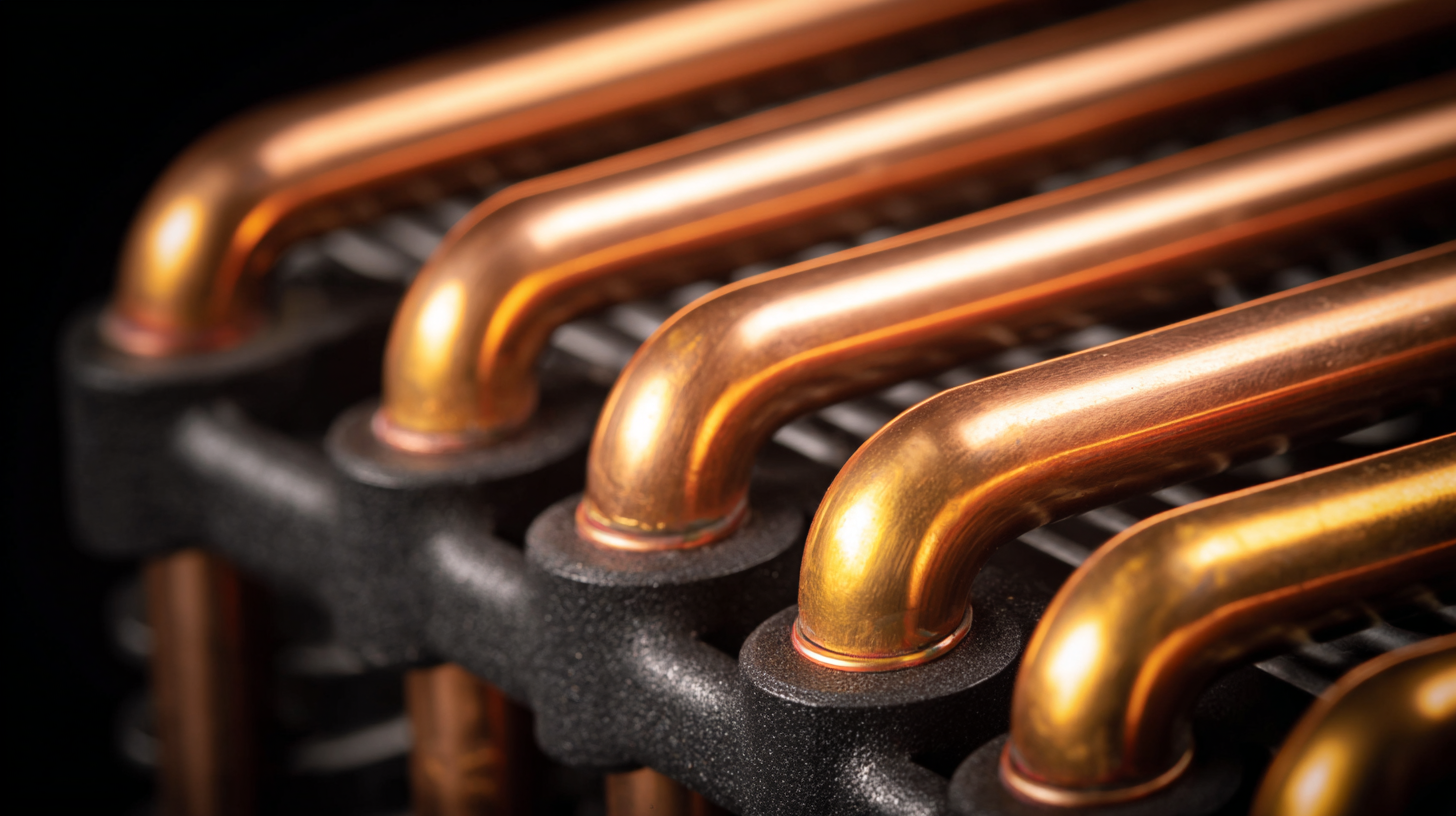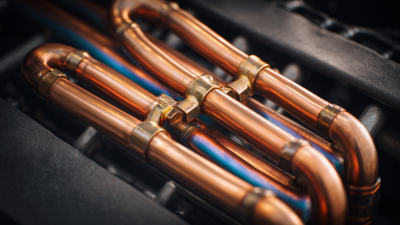 In the pursuit of sustainable automotive solutions, the role of the copper radiator has become increasingly significant due to its superior efficiency and longevity. According to a report by the International Copper Association, copper's excellent thermal conductivity makes it an ideal material for automotive cooling systems, leading to enhanced heat dissipation and improved engine performance.
Studies have shown that vehicles utilizing copper radiators achieve up to 30% greater efficiency compared to those using aluminum counterparts, thus contributing to lower fuel consumption and reduced emissions. Moreover, the inherent durability of copper radiators, which can last significantly longer than aluminum ones, aligns with the industry's shift towards sustainable practices, minimizing the need for frequent replacements and reducing overall waste.
As the automotive industry continues to innovate and prioritize eco-friendly technologies, copper radiators stand out as a crucial component in driving sustainability and efficiency.
In the pursuit of sustainable automotive solutions, the role of the copper radiator has become increasingly significant due to its superior efficiency and longevity. According to a report by the International Copper Association, copper's excellent thermal conductivity makes it an ideal material for automotive cooling systems, leading to enhanced heat dissipation and improved engine performance.
Studies have shown that vehicles utilizing copper radiators achieve up to 30% greater efficiency compared to those using aluminum counterparts, thus contributing to lower fuel consumption and reduced emissions. Moreover, the inherent durability of copper radiators, which can last significantly longer than aluminum ones, aligns with the industry's shift towards sustainable practices, minimizing the need for frequent replacements and reducing overall waste.
As the automotive industry continues to innovate and prioritize eco-friendly technologies, copper radiators stand out as a crucial component in driving sustainability and efficiency.
Copper plays a crucial role in enhancing thermal conductivity, particularly in automotive radiators, where efficient heat dissipation is paramount for performance and longevity. The properties of copper allow for superior heat transfer compared to other materials, making it an ideal choice for radiators that need to regulate engine temperatures effectively.
As automotive technologies evolve in response to the demands of electric vehicles and advanced engine designs, optimizing thermal management systems becomes increasingly essential.
Recent advancements in materials science also highlight the importance of effective thermal management. As devices in high-performance electronics trend toward higher power densities, effective cooling solutions like diamond/metal composites gain attention, yet copper remains foundational due to its widespread availability and excellent thermal properties.
The automotive sector's reliance on copper radiators showcases the material's enduring relevance, as manufacturers seek to balance efficiency with sustainable practices. As the industry navigates the challenges posed by new technologies, the integration of copper in cooling systems will remain vital for maintaining performance and reliability.
When comparing copper and aluminum radiators in terms of cooling efficiency, it becomes evident that each material has its distinct advantages. Copper, known for its superior thermal conductivity, outperforms aluminum in heat transfer capabilities. This characteristic allows copper radiators to dissipate heat more effectively, maintaining optimal engine temperatures even under demanding conditions. Additionally, copper’s ability to withstand higher pressures and temperatures enhances its reliability in high-performance automotive applications.
On the other hand, aluminum radiators are lighter and often less expensive, making them a popular choice for manufacturers aiming to reduce vehicle weight and costs. However, while they may be adequate for standard applications, their thermal conductivity does not match that of copper. This often leads to a trade-off in performance, particularly in high-stress environments where effective cooling is paramount. As the automotive industry increasingly emphasizes sustainability and efficiency, the choice between copper and aluminum radiators becomes crucial in balancing performance, longevity, and environmental impact.
Copper radiators are gaining recognition in the automotive industry for their exceptional longevity and cost-effectiveness over a vehicle's lifespan. Unlike their aluminum counterparts, which may corrode or lose efficiency over time, copper radiators maintain their performance, ensuring that vehicles remain cool even under high-stress conditions. This durability translates into reduced maintenance costs for vehicle owners, as copper not only lasts longer but also requires less frequent replacement.
As the car radiator market continues to grow, with projections reaching nearly $9.9 trillion by 2035, the demand for efficient materials like copper is likely to increase. Factors driving this trend include the rising output of vehicles and the necessity for effective cooling solutions in electric vehicles. The efficiency and stability provided by copper radiators make them a critical component for sustaining vehicle performance, further emphasizing their cost-effectiveness and essential role in the long-term viability of automotive cooling systems.

 Copper radiators play a crucial role in promoting environmental sustainability within the automotive manufacturing sector. Their superior thermal conductivity ensures that engines operate at optimal temperatures, improving efficiency and reducing energy consumption. This not only translates to better vehicle performance but also decreases greenhouse gas emissions, aligning with global efforts to mitigate climate change. The durability of copper, which outlasts many alternative materials, means that fewer resources are needed for manufacturing replacements, further decreasing the environmental footprint.
Copper radiators play a crucial role in promoting environmental sustainability within the automotive manufacturing sector. Their superior thermal conductivity ensures that engines operate at optimal temperatures, improving efficiency and reducing energy consumption. This not only translates to better vehicle performance but also decreases greenhouse gas emissions, aligning with global efforts to mitigate climate change. The durability of copper, which outlasts many alternative materials, means that fewer resources are needed for manufacturing replacements, further decreasing the environmental footprint.
Tips for manufacturers looking to embrace copper radiators include focusing on recycling processes. Copper is infinitely recyclable without losing quality, making it an ideal choice for sustainable production. Additionally, investing in modern assembly techniques can enhance the longevity of these components, maximizing their efficiency over time. Furthermore, educating consumers about the benefits of copper can drive demand for more eco-friendly vehicle options, creating a positive feedback loop that supports a sustainable automotive industry.
The automotive industry is increasingly looking towards sustainable solutions, and copper radiators stand out as an essential component in this pursuit. Case studies from modern vehicles illustrate how manufacturers have successfully integrated copper radiators, significantly enhancing cooling efficiency and longevity.
These radiators are known for their superior thermal conductivity, which not only improves engine performance but also contributes to reduced energy consumption and emissions. As automakers strive to meet stringent environmental standards, the adoption of copper radiators proves beneficial in creating more sustainable vehicles.
The narrative presented in recent critiques of popular culture, such as the storyline in a notable animated film, highlights the importance of balance in technological advancement. While the fictional Radiator Springs and its characters emphasize individual autonomy, they also serve as a reminder of nature's limits.
Embracing copper radiators in automotive design mirrors this balance; it underscores the need to prioritize both efficiency and environmental responsibility. By integrating sustainable materials into their systems, manufacturers can pave the way for a future where vehicles not only perform well but also coexist harmoniously with the environment.






